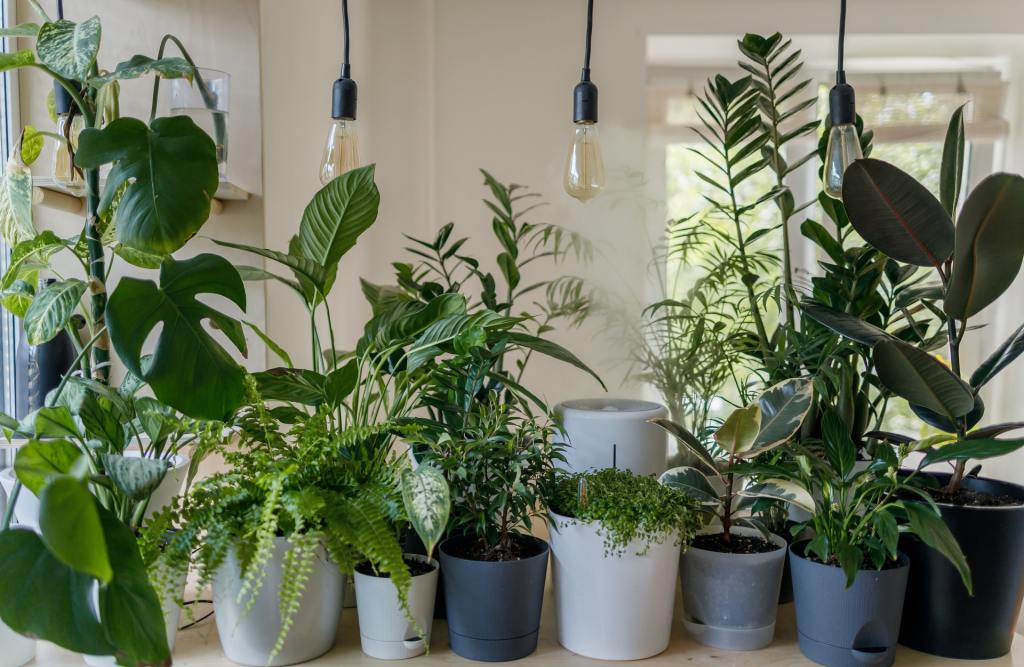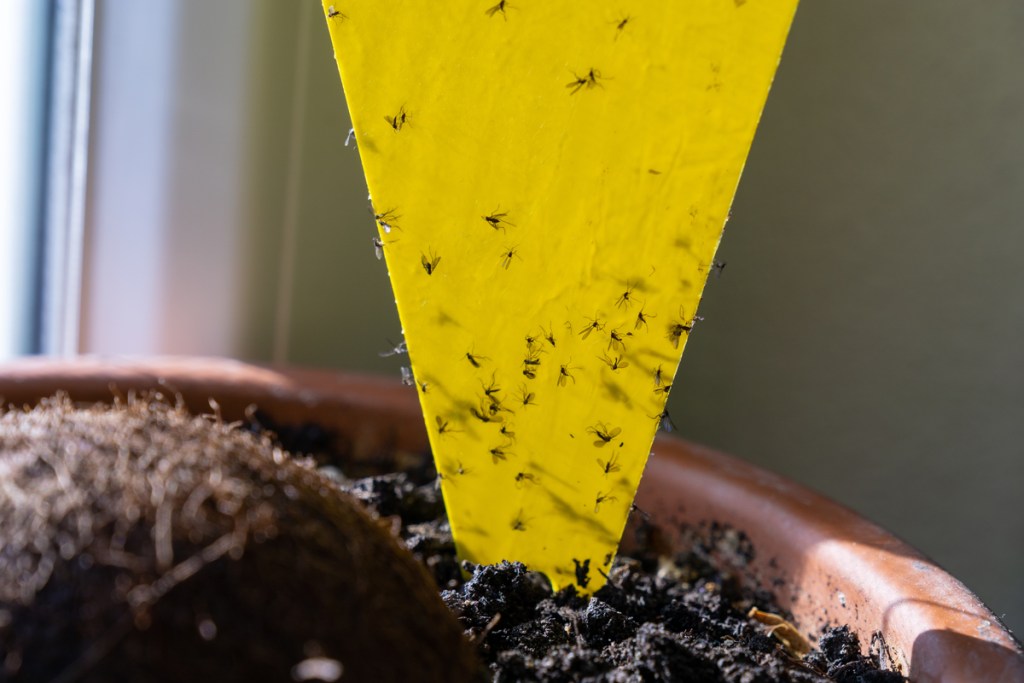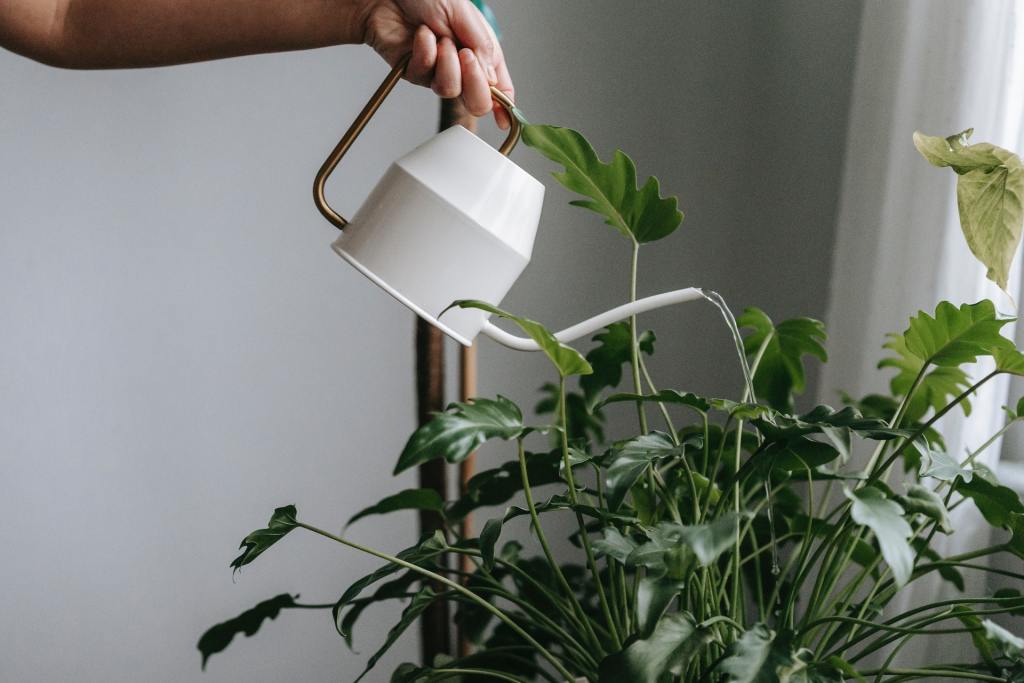As far as common houseplant pests go, fungus gnats aren’t necessarily the worst critters to linger around your plants, but they can be quite the nuisance. Fungus gnats typically bother plants that are already struggling with overwatering or fungal infections. On their own, they're more likely to be a symptom of a larger issue rather than a problem in their own right.
Really, gnats only become problematic when they start to multiply — and once they multiply, they can multiply fast. While it might not live for more than two weeks, an adult fungus gnat can lay up to 300 eggs, making it imperative that you treat an infestation as soon as you notice it.
It’s easy to see just how problematic gnats can become, so how can you eliminate them? We'll go over tips on how to get rid of fungus gnats and prevent these pests from taking over your home, and we'll break down tried-and-true solutions for getting rid of them.

What to do when fungus gnats start attacking your plants
While they’re harmless, fungus gnats can be indicative of a more serious problem. The number-one culprit behind fungus gnats is — drumroll please — overwatering! True to their name, fungus gnats often feed on fungus in the soil that can grow from overwatering and root rot. When you see them hovering around a specific plant, this may be a sign that you need to cut back on watering that plant.
Step 1: Isolate the affected plant from the rest of your collection to prevent the gnats from laying eggs elsewhere.
Step 2: Repot the affected plant into fresh soil, removing as much of the infected potting mix as possible. Replace it with a sterile, soilless mix if you can — organic amendments often attract these flying bugs.
Step 3: When you water your plants, use a method such as bottom watering to ensure you never let your plant sit in water.

Solutions for getting rid of fungus gnats
After doing some damage control for your plants, it’s time to attack the fungus gnats themselves. Luckily, you can easily access solutions for fungus gnats since they’re a pretty common problem. You might even be able to grab remedies from your kitchen or medicine cabinet. Depending on the size of the infestation and what items you have available in your home, here are six solutions you can try.

Solution 1: Yellow sticky traps
Yellow sticky traps aren’t the most subtle means of getting rid of fungus gnats, but they are effective. Adult fungus gnats will fly right to them and get stuck. While the traps can become unseemly over time, they will stop the gnats from reproducing. Yellow sticky traps for houseplants are easy to access as well — you can often find them in the pest control area of your local garden center or even make them at home.

Solution 2: Mosquito bits
Bacillus thuringiensis, or Bt, is used in a popular product called Mosquito Bits, which, in spite of its name, will also help you get rid of fungus gnats. Bt is essentially a bacteria that kills fungus gnats but is considered safe for humans and pets. Mosquito pellets are very effective, as they systematically kill larvae in the soil.
Step 1: If using Bt in pellet form, sprinkle the pellets directly onto your soil.
Step 2: If preferred, you can also soak the pellets inside your watering can to release the bacteria into the water. Pre-soaking allows the bacteria to travel more quickly to the roots, where the fungus gnats are likely feasting.

Solution 3: Apple cider vinegar
All you need for this one is apple cider vinegar, a clear cup, and plastic wrap.
Step 1: Fill a cup approximately one-third of the way with vinegar.
Step 2: Cover the top of the cup with plastic wrap and poke a small hole in the foil top. Adult gnats will fly into the vinegar through the small hole and eventually drown.

Solution 4: Hydrogen peroxide
The next time you water a plant infested with fungus gnats, test out a hydrogen peroxide solution. While hydrogen peroxide might not be as effective as other suggestions on this list, it’s worth a shot since it’s probably already in your medicine cabinet! And while you can use a hydrogen peroxide solution as a spray on stems and leaves, it’ll work better in the growing medium because this is where eggs typically hatch.
Step 1: Create a mixture of one part 3% hydrogen peroxide and four parts water.
Step 2: Water affected plants with the hydrogen peroxide mixture, soaking the plant to kill larvae lurking in the soil. Don’t worry if the soil starts to fizz, as this is what happens when hydrogen peroxide breaks down.

Solution 5: Neem oil
Diluted neem oil is one of the most versatile products for dealing with pests. You can usually find it online or at your local garden center for use on plants. Whether you have scale, thrips, or gnats, it’s definitely convenient to have neem oil lying around to manage pests. Neem oil works by stopping insects from mating and eating, so they eventually die. The drawback with neem oil is that it’s usually a foliage spray, so you probably won’t be able to get it down to the roots where gnats and their larvae attack near rotting roots.

Solution 6: Cover the soil with sand
Since fungus gnats lay their eggs in the soil, one way to prevent them from bothering your plants is to stop them from reaching the soil. Adding a layer of sand to the top of the soil will prevent fungus gnats from laying eggs in the soil, and it will trap any existing eggs or larvae from reaching the surface.
While this won't get rid of an existing infestation, placing a layer of sand on the surface of the soil can keep an existing infestation from getting worse and prevent future infestations. Water and liquid fertilizer will still be able to reach the soil through the sand, so your plant won't be harmed by this method.
While not necessarily harmful, fungus gnats can quickly grow out of control and may also indicate an overwatering issue with your houseplants. To prevent fungus gnats, key preventative measures include never letting your soil get waterlogged and avoiding organic matter in your soil.
If you do find your indoor jungle becoming a home to gnats, there are plenty of solutions out there to get rid of them. With a cup of apple cider vinegar or a sprinkle of mosquito bits, you’ll be on your way to getting rid of those pesky fungus gnats once and for all.



